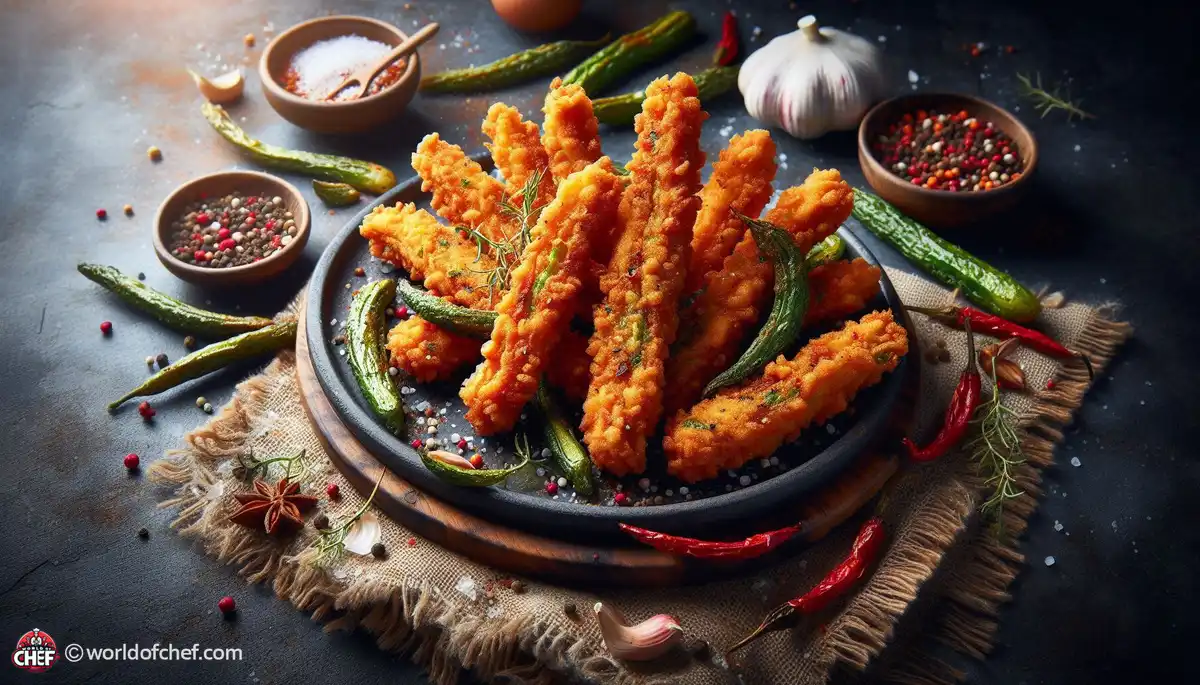
Simmering with Spices: Infusing Flavor into Your Dishes
Emery Donley - Oct 8, 2024 - 8 min read


The point is that not all veggies are created equal when it comes to frying. Zucchini and eggplant are full of water, whereas cauliflower and broccoli are very dense. So, choose the vegetables that will stand up well to frying without becoming soggy or limp. Sturdy vegetables are better, like bell peppers, onions, and mushrooms, which won't let too much moisture out during cooking.
The vegetables are prepared in such a way that will allow for the nice crispy, golden-brown perfection qualities. Start by washing and drying the vegetables quite thoroughly since excess moisture can prevent the breading from sticking. Cut the bigger vegetables, like cauliflower or eggplant, into manageable pieces so that they will cook better. If using a more thick-skinned vegetable such as a potato or sweet potato, peel it first for a bit easier textural handling.
Your choice in batter can be the break or make of your entire dish. Where some are looking for that light crispiness of a tempura batter, others may opt for a more breaded heavy coating with beer. Experiment with different batters to find the one that suits your taste preferences and complements the vegetables you're frying. Remember, lighter batters work well for delicate vegetables, but heartier batters can be used for denser vegetables that can take more of a heavier coating.
Seasoning is the magic ingredient that takes fried vegetables from good to great. The right batter, seasoned to perfection, not only brings out the flavor of the vegetables but also makes the dish much more profound and complex. Salt is the most basic seasoning that brings out the natural flavors of the vegetables, but do not hesitate to experiment with herbs, spices, and other flavorings for that extra edge in fried veggies.
Seasoning of the batter is very important in seasoning your batter. There should not be too much salt as it can overwhelm the natural sweetness of the vegetables. Too little salt makes it either too bland or unappetizing. Try mixing different seasonings like garlic powder, paprika, or cayenne pepper. Add fresh herbs like parsley or cilantro for that burst of freshness and color.
This shall essentially add flavor to your fry, but it can further complement your fried vegetables. Mixing some cornmeal or breadcrumbs into your batter should give a great crunch to the outside and still stay tender inside the vegetable itself. Other textures you may want to try are the grated cheese or finely chopped nuts to add more extra texture and richness. Make sure to mix the batter until just combined and do not overwork so you don't end up with a tough, chewy coating.
The number one mistake when frying vegetables is to fail in keeping the oil at the right temperature. If the oil is too hot, the vegetables may be burnt on the outside before they are properly cooked, and oil not hot enough can leave greasy and soggy vegetables. Invest in a deep-fry thermometer so you maintain the temperature of the oil at between 350°F and 375°F. You should adjust the heat as needed to maintain uniform temperatures throughout the frying process.
Other mistake when frying vegetables is crowding the pan. Piling in too many vegetables at one time causes a rapid decrease in oil temperature resulting in unevenly cooked soggy greasy vegetables. To fry your vegetables evenly and crunchy on the outside, make sure you fry them in small batches, leaving room between the pieces for cooking. Draining Excess Oil
It is better to wait several minutes before serving the fried vegetables from off a plate lined up with paper towels or placing them over a wire rack on top of the counter. The excess oil present in the fried vegetables does not accumulate into the dishes, hence avoiding heaviness and grease in the cooked food. For a little decadence, sprinkle the hot fried vegetables with a pinch of flaky sea salt when you serve them.
Fried vegetables are very versatile. They can be served as an appetizer, side dish, or even as a main course. Serve them with your favorite dipping sauce: ranch dressing, aioli, or sweet chili sauce for an added flavor. Alternatively, you can present them with grilled meats or seafood for a full-filling and mouthwatering meal. You can present them in an attractive platter with fresh herbs or edible flowers for garnish for a fantastic view to present to your guests.
Adding garnishes and finishing touches to elevate the presentation is the last step in making the perfect fried vegetable dish. Sprinkle with fresh herbs like parsley or chives for a pop of color and freshness. Add a squeeze of lemon juice over the top of the vegetables just before serving for a touch of acidity. You can also add a sprinkle of grated Parmesan cheese or a drizzle of balsamic glaze for added flavor and sophistication.
Fried vegetables keep in the refrigerator in a tight container for two days. To warm up, spread them on a baking sheet in a layer and put that in a 350°F oven until heated through and crispy, about 10 minutes. Fried vegetables do not reheat well from a microwave; they quickly turn soggy. You can make your leftovers for an in-the-moment snack or combine them with salads, sandwiches, or wraps to have a meal on the go.

Emery Donley - Oct 8, 2024 - 8 min read

Russell Comeaux - Oct 8, 2024 - 8 min read

Walter Backus - Oct 7, 2024 - 8 min read

Samantha Thames - Oct 7, 2024 - 6 min read